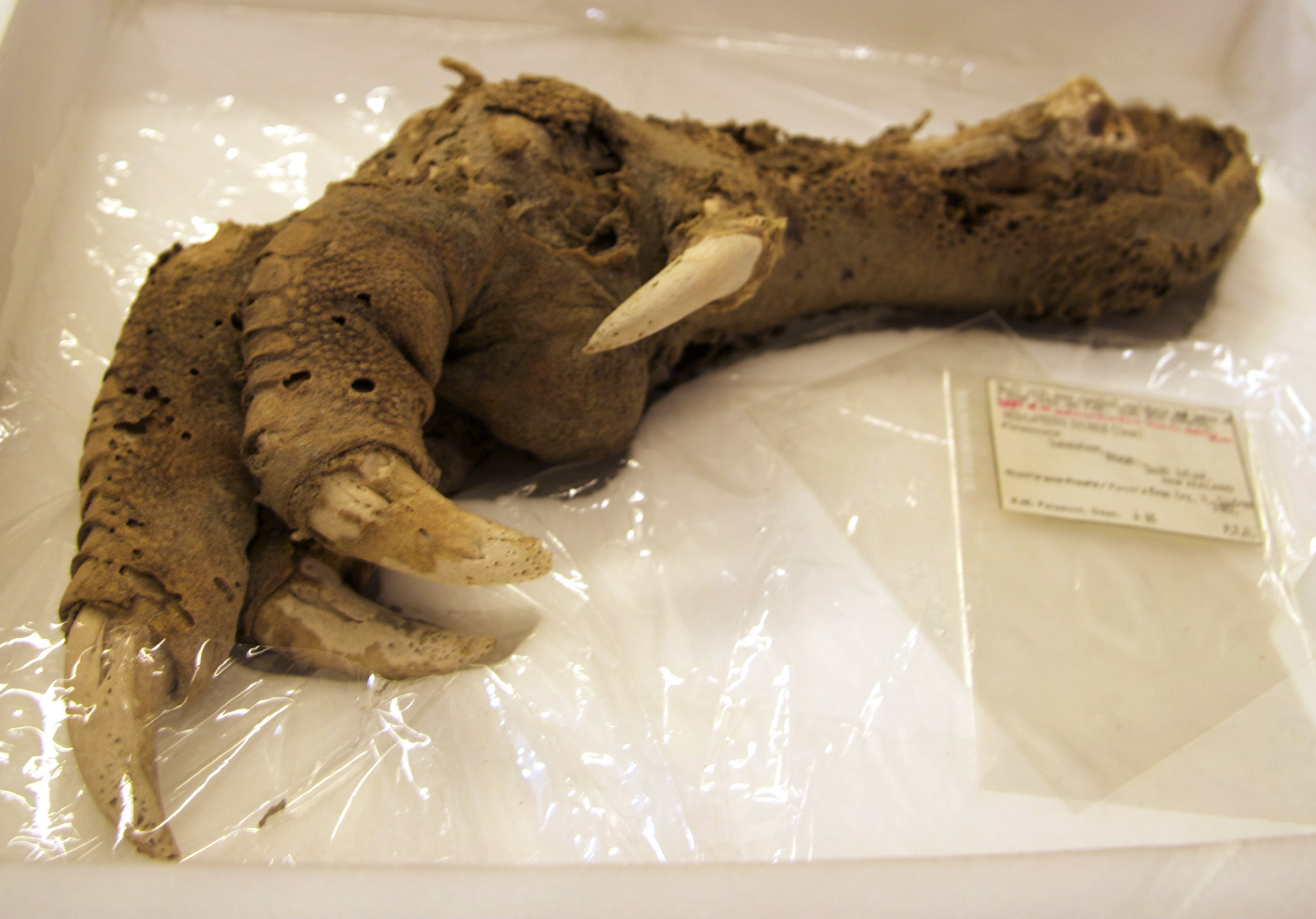Much like the Mammoth family, Moa birds (Dinornithiformes), are tantalizingly alluring because they only very recently went extinct (13th century A.D.). Like the Woolly Mammoth we don't just have fossils of these avian giants but also mummified bodies, eggs, midden remains and feces. Because of their recent extinction, quality of remains, and the fact that their vegetative habitat still exists in New Zealand allows perhaps better precision in reconstructing their ecology than any other group of extinct mega-herbivores.
A recent paper in PLoS ONE analyzes the preserved coprolites of the Upland Moa (Megalapteryx didinus). 35 coprolites from a remote sub-alpine cave reveal pollen, macrofossil traces, and DNA representing 67 plant species. Included is the first evidence of Moa feeding on the nectar rich flowers of New Zealand flax (phormium) and tree fuchsia (Fuchsia excorticata).
| Common in cultivation around world New Zealand Flax Phormium cookianum |
 |
| Illustration by Author. Upland Moa (Megalapteryx didinus) enjoying some Phormium cookianum flowers in rocky terrain. |
Large extinct megaherbivore, fragile island ecology, introduced mammalian herbivores....hmmm hopefully some of you are connecting the dots between this article and my last article. A quote from the paper:
"The coprolites provide some evidence for recent changes in plant abundance and distribution since human settlement. Fuchsia and wineberry (Aristotelia) were identified from the coprolites using both DNA and pollen, yet were not recorded from the Garibaldi Range by Druce et al. [38]. Both taxa are highly palatable to introduced herbivores [69], [72] and can suffer severe local declines due to over-browsing [73]. Further evidence that the herbivory pressure exerted by introduced mammals on Garibaldi Plateau is greater than that exerted under the prehuman avian-dominated regime comes from the large number of plant taxa in the coprolites (34.3%) that are now largely restricted to trench and sinkhole walls (Fig. 5). Rather than reflecting a tendency for upland moa to feed around these holes, it is more likely that these sites are now refuges to a range of palatable plants, which once may have been more widespread in subalpine herbfields but are now heavily browsed by introduced mammalian herbivores."
Those troublesome ungulates- once again we see that our hoofed friends put undue browsing pressure on a system that previously easily sustained 250 kg 12 foot tall herbivorous birds. In This Island Earth II you will remember I contrasted some of the characteristics that allowed Pygmy Mammoths to thrive with the native vegetation but not feral pigs. Did Moa birds share some of these characteristics? Let's see.
Reproduction. Moa are known for laying small clutches (Holdaway & Jacombs 2001). This makes the Moa reproductively more like the mammoth than the pig. In exceptionally good years they will not overrun their habitat in a single season.
Movement. Based on the pollen evidence the Upland Moa seems to have exploited both upper and lower elevations. Many Moa species show range overlap so perhaps they had some sort of resource partitioning going on. Again, more like the mammoth in utilizing different habitats effectively. Not any one habitat would feel the brunt of Moa browsing.
Food Choices. Again, like the mammoth, the Upland Moa shows a diversity in food choices. Does not put stress on any one type of vegetation. Unlike the pig and say, acorns.
Feet. What do you know, the Moa has relatively soft feet (if not pretty) compared to hoofed mammals. The sharp claws on the Upland Moa foot pictured below were, I postulate, adaptations to negotiate rocky terrain
Again, we can't assume that the size of a herbivore is proportionate to the amount of stress it places on the vegetation!!!
Pertinencia
No Moa: Modeling an Extinction. http://www.archaeology.org/online/features/moa/
(2012)
High-Resolution Coproecology: Using Coprolites to Reconstruct the Habits and Habitats of New Zealand’s Extinct Upland Moa (Megalapteryx didinus).
PLoS ONE 7(6):
e40025.
doi:10.1371/journal.pone.0040025
Support me on Patreon.
Like antediluvian salad on facebook.
Watch me on Deviantart @NashD1.Subscribe to my youtube channel Duane Nash.
My other blog southlandbeaver.blogspot.









